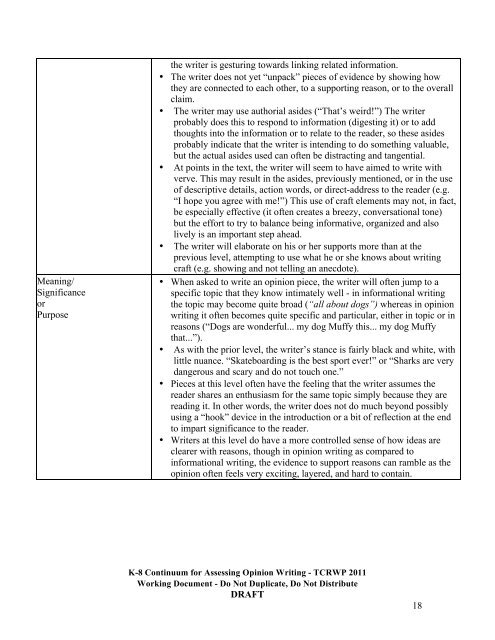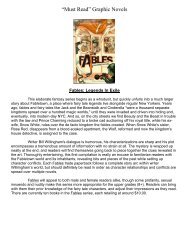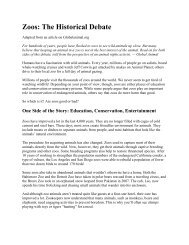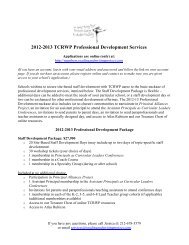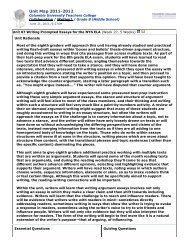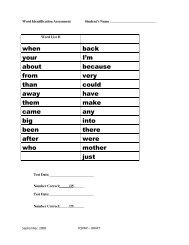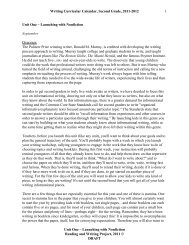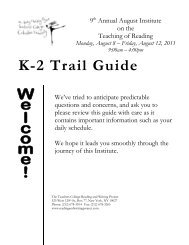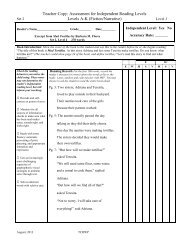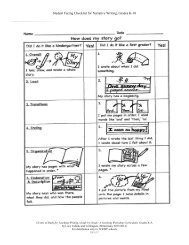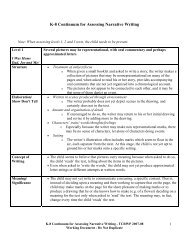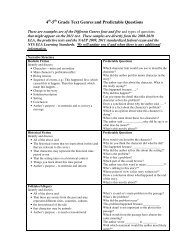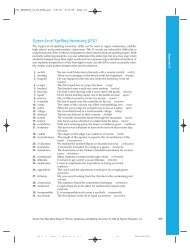Continuum for Assessing Opinion/Argument Writing - The Reading ...
Continuum for Assessing Opinion/Argument Writing - The Reading ...
Continuum for Assessing Opinion/Argument Writing - The Reading ...
Create successful ePaper yourself
Turn your PDF publications into a flip-book with our unique Google optimized e-Paper software.
Meaning/<br />
Significance<br />
or<br />
Purpose<br />
the writer is gesturing towards linking related in<strong>for</strong>mation.<br />
• <strong>The</strong> writer does not yet “unpack” pieces of evidence by showing how<br />
they are connected to each other, to a supporting reason, or to the overall<br />
claim.<br />
• <strong>The</strong> writer may use authorial asides (“That’s weird!”) <strong>The</strong> writer<br />
probably does this to respond to in<strong>for</strong>mation (digesting it) or to add<br />
thoughts into the in<strong>for</strong>mation or to relate to the reader, so these asides<br />
probably indicate that the writer is intending to do something valuable,<br />
but the actual asides used can often be distracting and tangential.<br />
• At points in the text, the writer will seem to have aimed to write with<br />
verve. This may result in the asides, previously mentioned, or in the use<br />
of descriptive details, action words, or direct-address to the reader (e.g.<br />
“I hope you agree with me!”) This use of craft elements may not, in fact,<br />
be especially effective (it often creates a breezy, conversational tone)<br />
but the ef<strong>for</strong>t to try to balance being in<strong>for</strong>mative, organized and also<br />
lively is an important step ahead.<br />
• <strong>The</strong> writer will elaborate on his or her supports more than at the<br />
previous level, attempting to use what he or she knows about writing<br />
craft (e.g. showing and not telling an anecdote).<br />
• When asked to write an opinion piece, the writer will often jump to a<br />
specific topic that they know intimately well - in in<strong>for</strong>mational writing<br />
the topic may become quite broad (“all about dogs”) whereas in opinion<br />
writing it often becomes quite specific and particular, either in topic or in<br />
reasons (“Dogs are wonderful... my dog Muffy this... my dog Muffy<br />
that...”).<br />
• As with the prior level, the writer’s stance is fairly black and white, with<br />
little nuance. “Skateboarding is the best sport ever!” or “Sharks are very<br />
dangerous and scary and do not touch one.”<br />
• Pieces at this level often have the feeling that the writer assumes the<br />
reader shares an enthusiasm <strong>for</strong> the same topic simply because they are<br />
reading it. In other words, the writer does not do much beyond possibly<br />
using a “hook” device in the introduction or a bit of reflection at the end<br />
to impart significance to the reader.<br />
• Writers at this level do have a more controlled sense of how ideas are<br />
clearer with reasons, though in opinion writing as compared to<br />
in<strong>for</strong>mational writing, the evidence to support reasons can ramble as the<br />
opinion often feels very exciting, layered, and hard to contain.<br />
K-8 <strong>Continuum</strong> <strong>for</strong> <strong>Assessing</strong> <strong>Opinion</strong> <strong>Writing</strong> - TCRWP 2011<br />
Working Document - Do Not Duplicate, Do Not Distribute<br />
DRAFT<br />
18


